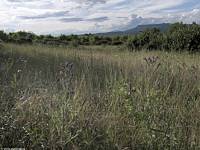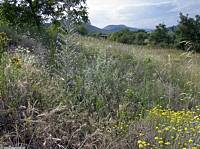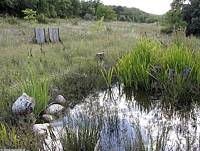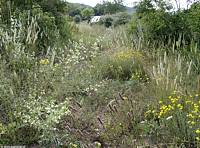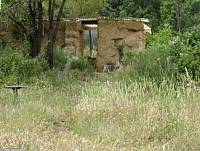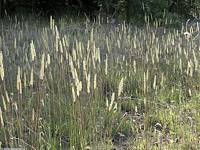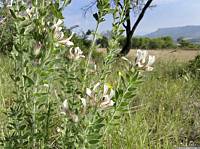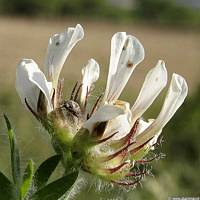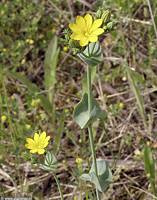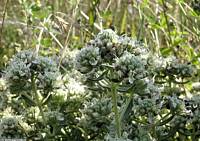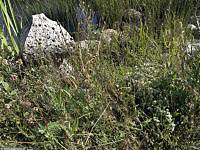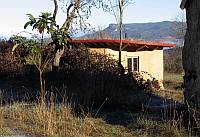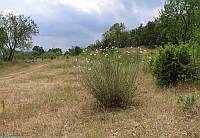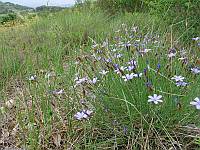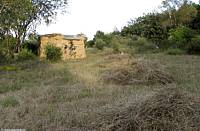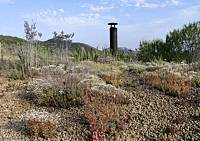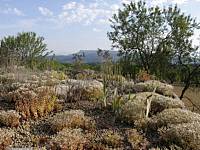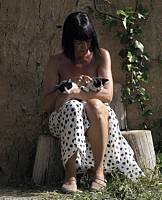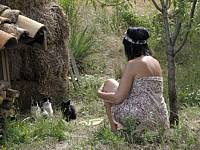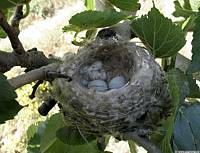|
|
Nature
Switched On
|
|
|
introduction
|
2011 June 11 to 21 The first day of the summer was the first day when the maximum temperature passed 30ºC. The vegetation is still quite green with thousands of flowering plants.
|
Hypericum perforatum, Echium vulgare, Sideritis hirsuta, Santolina chamaecyparissus, Galium fruticescens.
|
|
Upper pond. Looking north-west. 10 Jun 20:00 |
Central path with Phleum phleoides,
Galium fruticescens, Plantago lanceolata,
Santolina chamaecyparissus,
Cornus sanguinea. |
|
|
Purple-stem catstail (Phleum phleoides) is stealing the show
on several areas of the zone. It is a highly decorative grass, from
the start in April to almost
|
||
| Phleum
phleoides with Hieracium pillosella in the area
between the house and the greenhouse. 17 Jun 11:17 |
Lightshow of Phleum phleoides. |
|
|
Close-up of Dorycnium hirsutum. |
The total number of species in the zone is slowly but continuously rising. At this moment I count a total number of 282 botanical species of which 53 have been introduced by us. There are 5 plants on a waiting list to be identified and entire (difficult) plant groups like mosses, lichens and Carex haven been omitted so far, so the number of plant species is likely to increase considerably.
|
|
| On the
right with white flowers, probably introduced by drinking
animals: a dwarfshrub of Teucrium capitatum on the
shore of the upper-pond. 21 Jun 10:16 |
Close-up of Teucrium capitatum which I mistook
last year for a white-flowering Thymus vulgaris. |
|
|
Dry plants of Carthamus lanatus on the central
terrace. |
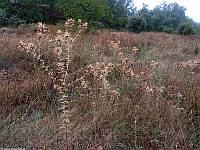 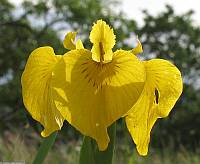
|
Iris pseudacorus
in the upper-pond. 9 May 2009 8:36
|
|
Introduced by us and not native to the region: Eriobotrya
japonica (Loquat). 15 Jan 2011 10:03 |
Looking astonishingly fresh and
sturdy in mid-summer: Cephalaria leucantha. 29 Jul 2008 12:13 |
|
| Little by
little spreading over the zone, especially the lower terrace: Aphyllanthes monspeliensis. 24 May 2009 10:50 |
Beautiful cushions of
Argyrolobium zanonii on the central terrace. Looking east. 8 Jun 2010 9:35
|
|
|
Two months ago I started the yearly cycle of cutting the vegetation with the scythe. The selection of the area and the moment of cutting depends on several factors: the height of the vegetation, the presence of important flowering species (which must be able to produce seed before being cut) and the need of hay as mulch in the vegetable garden. In general the areas near the house and vegetable garden are cut the earliest and most frequent (at least once per year) while areas further away will be cut later or not at all.
In the vegetable garden the hay is |
||
|
Another reason for cutting: this area had to be a camping area
for the caravan of some friends. Central terrace, looking south-west. 16 Jun 20:31 |
|
|
|
Alternating rows of vegetables,
hay and green fertilizers. On the extreme left Jerusalem artichoke, on the
right tomatoes. 17 Jun 11:23
|
||
|
The vegetation on the roof of the house has turned from yellow (Sedum acre) to white (Sedum anglicum and Sedum album flowers). They seem to thrive better than the more robust Sedum reflexum and Sedum sediforme, but these also bloom a bit later. |
||
|
White flowering Sedum album and S.anglicum
(lower). At the back S.sediforme and S.reflexum
(yellow) Looking north. 21 Jun 8:55 |
Sedum anglicum and
S. album with some dry stems of S.sediforme from last
year. Looking north-west 21 Jun 8:54 |
|
|
The cat family is doing well, perhaps a bit too well. We sometimes
envision a near future with a tribe of dozens of cats in the zone,
eating daily more meat in their cat food than I eat in a
month. But we are irregularly away |
||
|
A good meal is an effective way to make friends. |
'Stipje' and 'Snorretje' are
the tamest of the gang. |
|
|
Other familie
|
||
|
Only two eggs in this nest of a Goldfinch. 21 Jun 10:53 |
|
|
|
introduction
|
|
